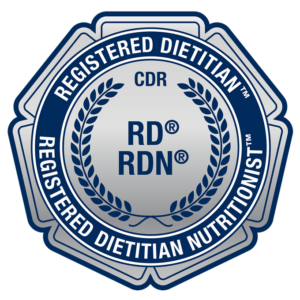Fueling the body is similar to fueling a car. You need the right kind of fuel for the best performance. Especially if you are a student athlete. It is more than eating the right amount of calories. It’s about optimizing the right fuel, in the form of macronutrients, micronutrients, and hydration as a means to reduce the risk of fatigue and injury. When you combine the right fuel mix, you provide your body with optimal energy and nutrients. While promoting peak performance, recovery and health.
Many factors can complicate optimal fueling for the student athletes’ performance. Factors like school, after practice schedules, selective eating, unhealthy food choices, and body image all can impact nutrient intake. The timing of meals and snacks supports optimal performance. Let’s talk a little more about how fueling the student athlete can achieve optimal health and recovery to reach their sports goals!
Macronutrient Fueling for the Student Athlete
A well-balanced diet of macronutrients include carbohydrates, protein, and fat. These combined together offer the right fuel mix for the student athlete. Let’s take a look at the importance of each macronutrient.
Carbohydrates
- The first line of fuel for activity.
- It should provide 45-65% of daily calorie intake.
- Fuel the brain for activities and mental awareness
- Prevent muscle burn out.
- Focus on whole grains, whole fruits, and vegetables, legumes most of the day
- Timing is important for quick fuel like snacks, sugary beverages, sports drinks, sweets, and white refined grains.
Fat
- The second line of fuel during long activities.
- It should provide 25-35% of daily calorie intake.
- Promotes satiety.
- Best if consumed a 2-3 hours prior to activity
- Healthy fats include nuts, seeds, avocado, oil and olives.
Protein
- Promotes muscle building and recovery after activity.
- It should provide 25-35% of daily calorie intake
- Not a primary fuel
- Good sources including fish, lean beef and poultry, eggs, cheese, legumes, soy.
Micronutrients Support in Fueling the Student Athlete
Micronutrients provide nutrients to support bodily function. And break down the macronutrients for energy. They play an important role in metabolism. It is important to understand that there is not a perfect food or nutrient that is superior. It is important to consume adequate energy in the form of macronutrients that are nutrient dense filled with micronutrients. Review how a few micronutrients support fueling the student athlete.
Calcium
- Promotes bone health
- Reduces the risk of injury
- Sources include dairy, fortified dairy alternatives, sardines, broccoli, legumes, cooked spinach, fortified foods.
Vitamin D
- Aides in the absorption of Calcium to strengthen bones and teeth
- Sources include 10-20 minutes of sun exposure, fortified dairy, fatty fish, egg yolks
Iron
- Promotes oxygen flow, part of red blood cell formation to prevent anemia
- Involved in the energy cycle
- Sources include animal sources, fortified whole grains, green leafy vegetables, and legumes.
Magnesium and Potassium
- Magnesium helps with muscle relaxation during the recovery phase
- Potassium maintains fluid volume and aides in normal nerve and muscle function
- Sources include dark leafy vegetables, nuts, seeds, legumes, dairy, potatoes
Omega 3 Fatty Acids
- May improve blood vessel function, reduce inflammation and improve mood.
- Found in the form of fish (EPA and DHA) or plant sources (ALA, linoleic acid)
- Sources include fresh water fatty fish, sardines, flax seed, walnuts, soy beans
Hydration: Vital Fuel for the Student Athlete
Hydration plays an important role in maintaining adequate fluid balance and prevent dehydration. It is often overlooked. Although sports drinks can play a role during lengthy activities, it is filled with sugar. Depending on the sweat rate, heat index, and duration of the activity, water is an ideal hydrant. There are plenty of foods that can support electrolyte replacement in addition to the proper macro and micronutrients recovery. Several fruits and vegetables offer hydration. Including cucumbers, watermelon, tomatoes, spinach and celery to name a few.
Fueling Recipe
Almond Butter and Apple Sandwiches
- 2 large apples, cored
- Juice of ½ lemon
- ¼ cup almond butter
- 1 Tablespoon honey
- 2 teaspoons milled flaxseed
- Ground cinnamon for sprinkling
Directions
- Slice the apples horizontally into 16 disks. The apple disks will form the base of the sandwiches, so keep similarity sized disks paired together.
- Put the lemon juice in a small bowl and dip both sides of the apple slices in the juice to prevent browning.
- Spread half of the apple slices with a thin layer of almond butter. Drizzle the honey over the almond butter. Sprinkle milled flaxseed over the honey.
- Place the remaining apple slices on top to make sandwiches. Gently press together.
- Sprinkle with cinnamon and enjoy immediately or refrigerate to set.
Yield: 8 servings
Prep: 10 minutes
Storage: Store in an airtight container in the refrigerator (or in a cooler on game days) for up to 3 days). Per serving (2 sandwiches): Calories : 200; total fat: 10gm: Protein: 4gm; Total carbs: 23gm; Fiber: 5gm
Fueling the Student Athlete with Nourish 2 Thrive
Other factors that affect optimal sports performance include body weight, body image, meal planning, over-exercising and sleep schedule. A Registered Dietitian can review an athlete’s lifestyle and provide individualized coaching. Nutrition education is key to better physical and mental performance and reduces the risk of injury and fatigue
As a teen athlete, I struggled with my body image as I tried to fuel my body for energy while worrying about my appearance. The struggles are real, but I’m here to reassure you that you or your loved ones can have a positive, long-lasting relationship with food, body image, and healthy habits. There is not a single food or diet that will define your success versus failure. I consider myself a foodie within moderation. To learn more about my services and how I could benefit an athlete, contact me below to set up a brief complimentary call.
Get to know you call with Laura Cordero
When was the last time someone listened to you? Really listened and provided active feedback. The best way to see if we are a good fit is in a free introductory discovery session.


